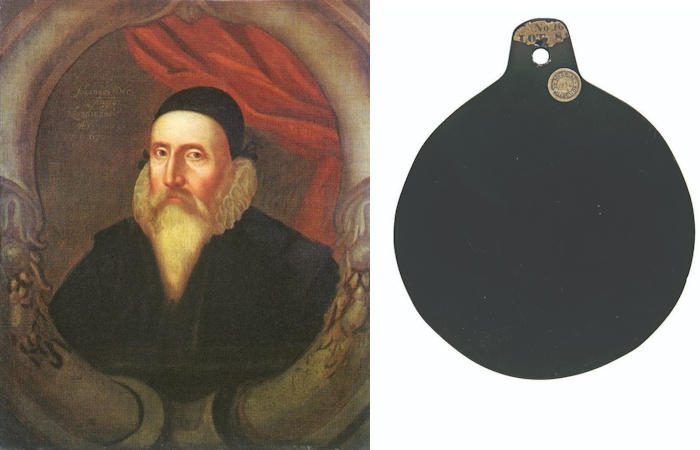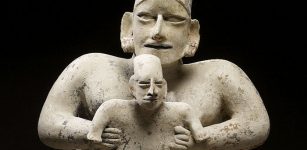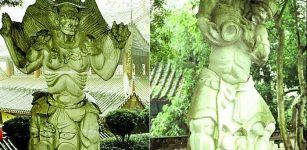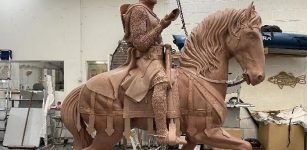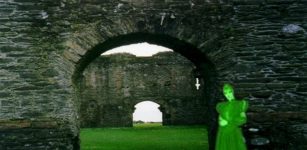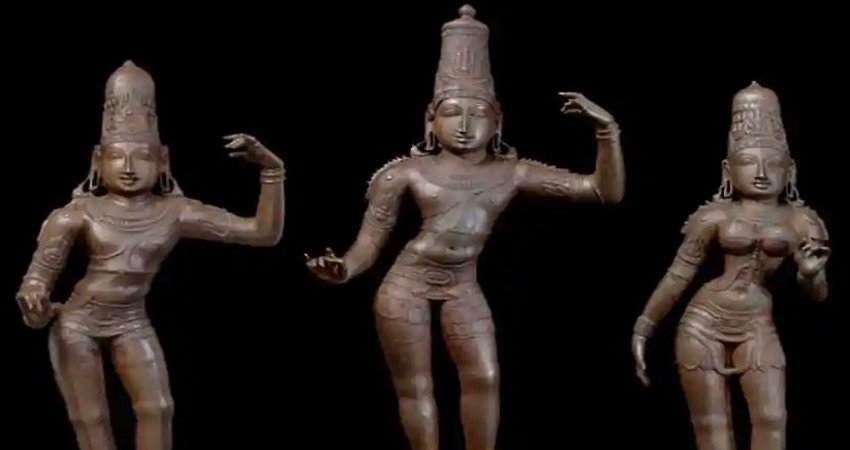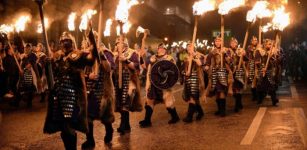John Dee’s Magical Mirror Used To Contact Spirits Can Be Traced To The Aztecs
Jan Bartek – MessageToEagle.com – English mathematician, occultist, astrologer, astronomer John Dee was one of the most learned men of his time. He lived when people were in the process of learning the difference between science and magic. Born on July 13, 1527 John Dee who was interested in magic and Hermetic philosophy lectured briefly at Cambridge and later studied in continental Europe under the famous mathematician-cartographers such as Abraham Ortelius, and Gerardus Mercator.
Hoping to obtain an official position with the English crown, Dee turned down a mathematical professorship at the University of Paris in 1551 and a similar position at the University of Oxford in 1554.
Left: John Dee – Credit: Public Domain – Right: Dee’s magical mirror examined by scientists. Credit: Antiquity (2021). DOI: 10.15184/aqy.2021.132
In 1555, Dee was arrested and charged with practicing black magic for having cast horoscopes of Queen Mary and Princess Elizabeth; the charges were expanded to treason against Mary; Dee cleared himself, was released, and became a scientific advisor to Elizabeth I, even acting as a spy for her. He built a laboratory and the largest private library in England at that time, which was said to number more than 4,000 books and manuscripts.
Scientists have now examined John Dee’s magical mirror used to contact spirits and discovered the artifact can be traced to the Aztec civilization.
New research has confirmed that an obsidian mirror used by John Dee, confidante to Queen Elizabeth I, to contact otherworldly spirits in his occult practices has Aztec origins.
“John Dee is a remarkable historical figure, a Renaissance polymath—interested in astronomy, alchemy, and mathematics—and confidante of Elizabeth I,” said Professor Stuart Campbell, from the University of Manchester, “Later, he became involved in divination and the occult, seeking to talk to angels through the use of scryers, who used artifacts—like mirrors and crystals.”
It had long been suspected that one of John Dee’s scryers, an obsidian mirror now in the British Museum, had Aztec origins. However, with no records on how he obtained it, this was impossible to prove.
Now, an international team of scientists, including Professor Stuart Campbell, have solved this mystery with geochemical analysis. Their research, published in the journal Antiquity, confirmed the Aztec origins of John Dee’s mirror.
Credit: Antiquity (2021). DOI: 10.15184/aqy.2021.132
Their analysis involved bombarding the mirrors with X-rays, resulting in the objects also emitting X-rays, which allow scientists to measure the composition of the artifact. These are unique ‘fingerprints’ that can be compared to obsidian samples to trace the origins of the material. The team studied four objects in the British Museum—John Dee’s mirror, two other Aztec mirrors, and a polished rectangular obsidian slab.
This method revealed that all four of the obsidian artifacts studied were made from Mexican obsidian exploited by the Aztecs. John Dee’s mirror, along with another with a similar design, originated from near Pachuca. This obsidian source was heavily exploited by the Aztecs.
To the Aztecs, obsidian also had spiritual significance. It could be used as part of medicinal practices, could act as a shield against bad spirits, and capture souls on its reflective surface.
Credit: Antiquity (2021). DOI: 10.15184/aqy.2021.132
One deity, Tezcatlipoca, is even named “smoking mirror” and often depicted wearing circular obsidian mirrors, as symbols of premonition and power.
“The 16th century was a period in which new exotic objects were being brought to Europe from the New World, and opening up exciting new possibilities in the intellectual world of the period,” said Professor Campbell.
See also: More Archaeology News
These Aztec mirrors were novel and exotic items that found a place in many early collections.
Stories about the meaning of the mirrors may have traveled with them, and may have been what motivated John Dee to acquire his mirror when he encountered it in Europe.
Written by Jan Bartek – MessageToEagle.com – AncientPages.com Staff Writer

